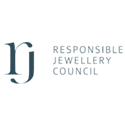As we stand on the cusp of 2024, the radiant allure of gold continues to enchant a diverse audience, from avid collectors who cherish its historical and cultural significance to pragmatic investors seeking a bastion against the capricious nature of financial markets. Gold’s intrinsic value is not merely a relic of the past but a beacon for many looking towards a future filled with uncertainties and opportunities alike.
In times of both prosperity and crisis, gold has stood as a symbol of stability and safety. Its unique properties and limited supply have perpetuated its status as a coveted asset, transcending fleeting market trends and economic upheavals. As the global economy braces for the year ahead, with its potential economic shifts and geopolitical developments, understanding the role and prospects of gold becomes paramount for anyone vested in its enduring legacy and economic potential.
Global Economic Indicators and Gold

As we edge closer to 2024, understanding the interplay between global economic indicators and gold prices is paramount for investors and enthusiasts alike. Gold, often seen as a stable store of value, reacts sensitively to changes in the economic landscape. Here are key factors to consider:
Monetary Policies of Central Banks: Central banks around the world wield significant influence over gold prices through their monetary policies. Interest rate decisions, quantitative easing measures, and reserve requirements all play a critical role. For instance, lower interest rates typically decrease the opportunity cost of holding non-yielding assets like gold, making it more attractive. As central banks navigate the post-pandemic recovery, their policy directions could significantly sway gold prices.
Inflation and Deflation Dynamics: Gold is traditionally viewed as an inflation hedge. In times of high inflation, gold prices tend to rise as the metal retains its value while currency buying power erodes. Conversely, deflationary periods, characterized by decreasing prices and increased purchasing power of currency, might see gold losing its appeal. Investors closely watch inflation indicators, such as consumer price indexes and commodity price fluctuations, to gauge gold’s potential movement.
Geopolitical Tensions and Economic Stability: Gold is often termed the “crisis commodity” because it tends to retain value or even appreciate during periods of geopolitical instability and economic turmoil. Whether it’s tensions between nations, economic sanctions, or unexpected political events, such uncertainties drive investors towards the relative safety of gold. The 2024 outlook could be shaped significantly by the geopolitical climate, with regional conflicts or global disputes prompting a flight to safety.
Currency Fluctuations: The strength of the US dollar holds a pivotal role in gold pricing. Since gold is dollar-denominated, a weaker dollar makes gold cheaper for holders of other currencies, thus increasing demand. Conversely, a strong dollar can dampen gold’s allure. The currency movements, driven by trade balances, political stability, and economic health, will continue to be a critical watch point.
Global Economic Health: The overall health of the world economy, indicated by GDP growth rates, unemployment figures, and consumer spending, also affects gold demand. In robust economic times, investors might favor riskier assets with potentially higher returns, such as stocks, over gold. In downturns, the flight to gold’s safety becomes more pronounced.
By closely monitoring these indicators, individuals interested in gold can make more informed decisions. As 2024 unfolds, staying attuned to these economic signals will be key to understanding and capitalizing on gold’s potential as a part of a diversified investment portfolio or a cherished collection.
Technological and Industrial Demand

Gold’s intrinsic properties—such as its excellent conductivity, resistance to rust, and non-reactive nature—make it an invaluable resource in various technological and industrial applications. As we look towards 2024, the demand for gold in sectors like electronics, aerospace, and healthcare is expected to rise, driven by continuous innovation and the growing need for high-quality, durable components.
In the electronics industry, gold is used in a wide array of devices, from smartphones and tablets to sophisticated GPS units and servers, primarily due to its superior conductivity and corrosion resistance. This ensures devices not only perform reliably but also have a longer lifespan. As the world becomes increasingly digital and the consumer appetite for electronic goods grows, the demand for gold as a key component is likely to increase.
The aerospace sector also relies on gold for critical applications. Its reliability and resistance to the harsh conditions of space make it an ideal choice for coating spacecraft components. As nations and private entities push further into space exploration and satellite technology advances, the aerospace industry’s need for gold is expected to expand.
In healthcare, gold’s biocompatibility makes it safe for various medical applications, including in diagnostics and treatment. It is used in precision instruments like surgical equipment and life-support devices. Additionally, gold nanoparticles are at the forefront of innovative cancer treatments and rapid diagnostic tests. As medical technology advances and the global population ages, the demand for these gold-based technologies is anticipated to grow.
Looking forward to 2024, as these sectors continue to evolve and expand, the industrial demand for gold is set to increase. This surge will likely be driven by technological advancements, increased production of electronic devices, expansion of aerospace missions, and the continuous need for sophisticated medical technologies. For investors and enthusiasts, understanding these trends is crucial as they represent not just the enduring value of gold, but also its evolving role in the modern world’s technological and industrial landscape.
Market Trends and Investment Strategies

As we peer into 2024, understanding the intricacies of market trends and formulating robust investment strategies is crucial for those eyeing gold as an asset. Gold’s historical role as a safe haven asset means its appeal often increases during times of economic uncertainty, making it a popular choice for those looking to mitigate risk. However, the price of gold can be susceptible to volatile swings, influenced by factors such as currency values, interest rate movements, and investment flows into other assets like stocks and bonds.
In the short term, market trends can be driven by news events, geopolitical strife, and changes in investor sentiment. For example, an escalation in geopolitical tensions or a sudden downturn in the stock market can lead to increased demand for gold. Conversely, a stronger dollar or rising interest rates might diminish its attractiveness. Investors should keep a keen eye on such developments, ready to adjust their holdings as the situation warrants.
For long-term investors, the enduring value of gold should be considered alongside its historical performance. Over decades, gold has maintained its purchasing power and served as a hedge against inflation and currency devaluation. Understanding the cyclical nature of gold’s performance, including its relationship with other assets, can help in timing investments and optimizing portfolio allocation.
When it comes to investment strategies, diversification is key. Holding a mix of physical gold, such as coins or bullion, and paper gold, such as exchange-traded funds (ETFs) or mining stocks, can spread risk and provide liquidity options. Each form of gold investment comes with its own set of considerations, from storage and insurance costs for physical gold to the liquidity and ease of trading for paper gold.
Investors should also be mindful of the costs associated with buying and selling gold, including premiums, taxes, and transaction fees. Working with reputable dealers and staying abreast of market conditions can help in making informed and timely decisions.
Ultimately, the decision to invest in gold in 2024 should be based on a comprehensive understanding of the market, a clear assessment of one’s financial goals, and a willingness to adapt to changing economic landscapes. By staying informed and employing a thoughtful, diversified approach, investors can navigate the golden prospects of the coming year with confidence.

As we edge closer to 2024, the prospects for gold remain as radiant and compelling as ever, yet they are interwoven with complexities and uncertainties that demand a keen eye and a strategic approach. For investors and enthusiasts, gold continues to stand as a beacon of security and prosperity amidst the fluctuating tides of the global economy. Its inherent value, driven by cultural esteem and practical applications, positions gold uniquely in the investment landscape.
In 2024, as geopolitical tensions, economic policies, and technological innovations unfold, gold’s role and relevance are likely to be influenced significantly. Investors seeking a safe haven or a hedge against inflation may find comfort in gold’s historic resilience. At the same time, those intrigued by its industrial and technological applications may see potential in its growing demand.
To navigate the golden path ahead, it is crucial for individuals to stay informed about global economic developments, understand the factors that affect gold prices, and consider the long-term historical performance of gold as part of a diversified investment strategy. Whether as a tangible asset or a part of a larger portfolio, gold’s allure is set to continue, offering both stability and opportunity in the ever-evolving financial world.
Recent articles
The Significance of Gold at Christmas
The Rising Value of Gold and Bitcoin
The History of Gold as a Currency
Gold continues to shine, even in the prospect of a Goldilocks Economy















